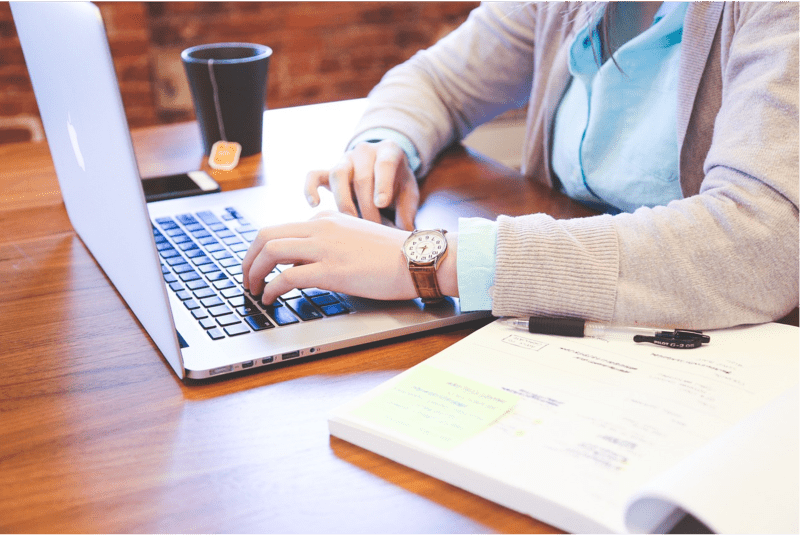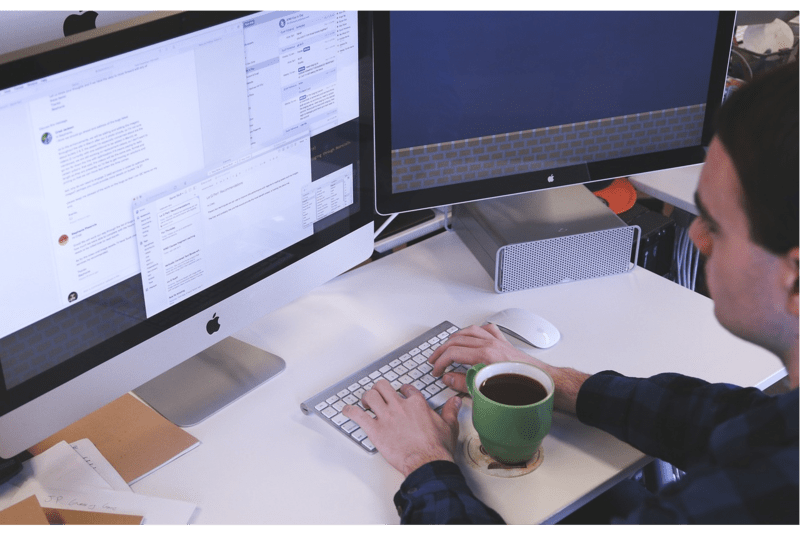How to Write Work Emails in German

As you learn the German language, you’ve probably put a lot of focus on conversation and passive learning. Another aspect that you are almost certainly going to need to know is email etiquette. It’s not an area that most people consider, but it is just as important to communicate through email in German as it is in English. Since you are going to write emails in German, you should know what to do - and what to avoid.
Most people don’t have traditional pen pals anymore – they communicate through something like email for similar kinds of connections.
Whether you write to someone for fun, for work, or for something else, knowing proper email etiquette gives you another way to practice the language.
Here are some tips and tricks to help you write emails in German – after all, it’s a great way to get your thoughts written down and feel confident in your writing abilities.

6 Common Ways of Beginning Emails in German
A lot of schools teach how to start a letter correctly, and emails tend to have the same type of rules. It’s not quite like texting where you usually know the person you are texting. It’s a way of talking quickly, so addressing someone isn’t really relevant.
For an email, the address is a way of verifying that the email is going to the right person. If someone sees that the name at the top is not their’s, they will probably stop reading because they can immediately see it isn’t for them. Of course, some people may keep reading, but at least they know it isn’t for them.
In English, you are taught to start your letters with phrases like Dear or To Whom It May Concern. German also has a few options of how to start an email.
However, they are more aware of being formal when they are not related to or close to the person they are addressing. They have an entirely different way of addressing people who are just acquaintances, even in conversation. You will need to be more formal in composing an email, as well.
The following are the common ways of beginning your email.
| Sehr geehrter/geehrte recipient’s name. (formal) | Esteemed recipient’s name (geehrter for men, geehrte for women) |
| Guten Tag. (formal) | Good day |
| Lieber/Liebe recipient’s name. | Dear recipient’s name. (Lieber for men, Liebe for women) |
| Hallo recipient’s name. | Hello recipient’s name. |
| Hallo. | Hello |
| Hey. | Hey. |
When you finish with the salutation, take a moment to go back and make sure you’ve got the right adjective ending. You don’t want to say Sehr geehrte Herr Schmidt or Sehr geehrter Frau Herrman because that sets the wrong tone for the rest of the email.
Setting the Tone - Formal vs Informal Emails in German
You’ll want to set a tone using the right form of German. If you are writing a work email, make sure to keep all of the conjugations in formal German and use proper addresses for people. It’s a great chance to practice being polite since you probably won’t use formal German as often in conversation – unless you are actually in a German speaking country.
If it is a formal email, such as a work email, remember to refrain from using slang as well. This should be fairly easy as you will want to keep the email concise. The closest you will come to small talk is in the salutation.
Formal German is actually a bit more challenging because you have to be more mindful of conjugations and adjective endings over the entire body of the email. When you are writing an informal email you can ramble and chat as much as you like since that is pretty much what you do when you catch up with someone.
Writing friends and family is a great way to really practice your German. You don’t want to treat your email partner as a teacher, but as a friend for most of your emails. This means you can not only use slang, you can add things like emojis and other images to be more playful and engaging.
Something to keep in mind when you email in German, you don’t use a capital letter for the first sentence of the email. That’s because the sentence actually starts with the greeting. The comma that you add after the introduction indicates that it is a break in the first sentence, and not a new sentence.
This may look a little odd, especially if you start off with “ich habe…” since German speakers don’t capitalize “ich” like English speakers capitalize “I.” The only time you would capitalize “I” is at the beginning of a sentence, and in this case, the “I” isn’t at the beginning.

8 ways of Closing Out Work Emails in German
After spending a good bit of time making sure that you get the ending right, especially if you are writing a formal email. Just like with the salutation, you have a number of choices for the way you want to close your email.
Here are the most common ways of wrapping up a formal letter:
| Ich bedance mich bei Ihnen im Voraus | Thank you in advance, |
| Ich würde mich freuen, bald von Ihnen zu hören | I look forward to hearing from you, |
| Ihr/Ihre | Yours, (use Ihr if you are male, and Ihre if you are female) |
| Mit besten Grüßen | With best regards, or Best regards, |
| Mit freundlichem Grüßen | With friendly regards, |
| Mit herzlichen Grüßen | With best wishes/ kind regards, |
| Vielen Dan für Ihre schnelle Antwort | Thank you for your quick response, |
| Vielen Dnak für Ihre Aufmerksamkeit | Thank you for your time/attention, |
Obviously, you will want to choose the response that meets your situation. If you expect a response, you will want to choose an ending phrase that reflects that. If not, you can use one of the more typical endings.
If you are closing out an informal email, you have a few choices:
| Alles Liebe | All the best, |
| Bis bald | See you soon, |
| Dein/Deine | Yours, |
| mit Liebe | With love, |
Notice that you don’t add a comma at this point in German, but you do in English. It’s actually the thing that you will probably take the longest to get right because people tend to be tired after writing a full email. It’s easy to feel over confident or mentally drained, so you are more likely to make this easy mistake at the end – if nothing else, you may add a comma out of habit.
Don’t forget to add your name after your email closer.
Getting the Other Components Right
Since you’ve probably sent a lot of emails, you know that there are a few other considerations to sending one than just the email body. Here are a few additional tips to help you to master those other email parts.
| Fields | |
| CC (carbon copy) | Empfänger hinzufügen |
| BCC (blind copy) | Empfänger hinzufügen |
| Subject | Betreff |
| Attach files | Dateien anhängen |

Staying Current with Email Etiquette in German
Like traditional letter writing, email etiquette doesn’t tend to change much over time. To make sure you stay current, make emailing someone a regular part of your schedule. This can be daily or weekly – and that’s what makes having an email pen pal ideal for making sure you don’t lose your German skills. A lot of German speakers will be happy to help point out where you make mistakes or to offer advice.
Once you get used to writing emails, it’s pretty easy to keep this skill current. All you have to do is make sure that you have someone to email in German to keep your skills from getting rusty.
